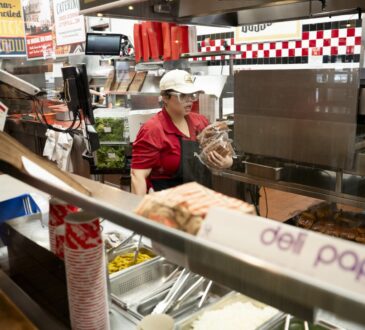
Speaking to CNBC-TV18 after the listing, Rajnish Narula, Managing Director and CEO of Canara Robeco AMC, said the company expects to sustain the 30% compound annual growth rate (CAGR) it has achieved in recent years. “We’ve been one of the fastest-growing AMCs over the last five years, and we have delivered an impressive CAGR of 30%. We do believe in the India story, and we believe the industry is poised for a breakout moment as well,” he said.
Narula said the firm sees a “long runway ahead” for India’s mutual fund industry and remains confident of sustaining its growth momentum. “We are confident that we will maintain this momentum going forward,” he added.
The company, which manages a predominantly retail and equity-focused portfolio, continues to prioritise performance-driven growth. Narula explained that Canara Robeco prefers an “investment-led strategy” over aggressive sales-led expansion. “You only get AUM based on performance. Investors and unit holders reward you for your track record,” he said, adding that all of the AMC’s funds with a 10-year track record have outperformed their benchmarks.
Equities remain the core focus area for the asset manager, with about 91% of its total assets under management (AUM) invested in equity schemes. Narula said this positioning reflects the firm’s conviction that “equity markets will outperform all other asset classes seven out of ten years.”
Looking ahead, Narula said the AMC plans to continue expanding its product offerings and market reach, with a new fund likely to be launched before the end of FY26. “We believe we can replicate similar growth rates as in the past, going forward — at least for FY26 and FY27,” he said.
The ₹1,326-crore initial public offering (IPO) of Canara Robeco AMC had seen strong investor demand, being subscribed nearly 10 times between October 9 and October 13. The issue was entirely an offer for sale (OFS) of nearly 5 crore shares by the promoters — Canara Bank and Orix Corporation — meaning no new capital was raised for the company.
Below is the verbatim transcript of the interview.
Q: Now that you are listed, you will be able to give us more idea about the future prospects of the business as well. For an AMC, of course, AUM growth matters the most, and the fee you earn on that, in terms of revenue contribution, is something investors would like to know. What are the plans for AUM growth going forward? What are you targeting? You’ve seen around 30% CAGR in the last two fiscals. Is this something you will continue, or could it be better than that?
Narula: We’ve been one of the fastest-growing AMCs over the last five years, and we have delivered an impressive CAGR of 30%. We do believe in the India story, and we believe the industry is poised for a breakout moment as well. So, we see a long runway ahead and continued growth momentum. We are confident that we will maintain this momentum going forward.
Q: Your institutional business, your folios there, account for less than 1% of your overall business. Is there a plan to increase this portion, say to at least mid-single digits first, before you move to double digits?
Narula: The institutional business typically is a high-ticket business, so the number of folios tends to be smaller. We are building a retail franchise because we want to have a dominant position there. For us, retail money — especially in equities — is very sticky. And we are on a T+1 business model, so we shouldn’t forget that, as the industry allows investors to withdraw money the very next day. If you want to build a company that stands the test of time, you need to focus on retail, and you need to focus on equity.
Q: I wanted to understand the competitive landscape right now. We have almost 54 AMCs, out of which four or five are listed. In terms of competition, what are the strategies AMCs can adopt to increase AUM growth? Because while there are many products, overall growth will be limited by the number of investor accounts.
Narula: You can have two strategies in our business. One is a sales-led strategy, where you invest heavily in distribution and build your business from there. The other is an investment-led strategy, where you deliver consistent performance over time, and AUM growth happens naturally. We prefer the investment-led strategy — that’s going to be our focus going forward. It has been our focus in the past as well. All our funds that have crossed the 10-year mark have outperformed their benchmarks.
Q: Which product category do you expect to see higher growth in — equity or debt? What does the overall AUM composition look like?
Narula: We believe that equity markets will outperform all other asset classes seven out of ten years. That’s our firm belief, and we are positioned accordingly. Currently, 91% of our AUM mix is in equity because of that conviction.
Q: The number of AMCs in India almost makes it seem that investors are spoiled for choice — especially with players like BlackRock now entering the fray. How do you plan to first protect your market share, and then grow it further?
Narula: This is, in many ways, a very beautiful industry. You only get AUM based on performance. Yes, initially, there will be hype around new brands that come in — and it’s good to see more AMCs entering the market, as it shows there’s confidence in the industry’s long-term potential. But ultimately, you can only attract AUM because investors and unit holders reward you for your track record. You need to perform first before you get the money. Everyone has their own unique race to run. We will run ours and build an institution that stands the test of time.
Q: This industry typically has low capital expenditure, so profit improvement largely depends on revenue growth. What is the AMC’s fee structure like? How often can you change it? I’m trying to understand what the levers for revenue growth could be, given the current fee model.
Narula: As you’re aware, the fee structure is based on the TER (Total Expense Ratio) that you can charge to the schemes, and each TER is mandated by the regulator. For equity schemes, it’s different from debt schemes. You’re absolutely right — the fee structure and yields depend a lot on the revenue growth that comes through. But typically, it’s AUM-driven. The kind of AUM you get from the markets and the distributors you work with are very important. If I had to pick one single factor driving growth, it would be AUM growth — that’s what leads to profitable growth overall. You’re right, this is a capital-light business, and we benefit from operating leverage — the same fund manager can manage ₹1,000 crore or ₹10,000 crore.
Q: What are your strategic priorities now that you’ve become a listed company? Can you share your three-year or five-year roadmap? Also, by what percentage are you aiming to grow this year? We’re already through the first half, so what’s the outlook for the second half in terms of revenue growth and margin performance?
Narula: If you’re asking about our strategic focus — we are a people business. Our priority is to be a company that attracts top talent. The day you stop attracting good people is the day you start losing business. So, for us, the focus on people and talent is very important.
Yes, there are other priorities too — such as expanding in different markets and product lines. We have a lot of opportunities to explore across various product categories. We will possibly launch another fund before the end of FY26. And in terms of growth rates, we believe we can replicate similar growth rates as in the past, going forward — at least for FY26 and FY27.




